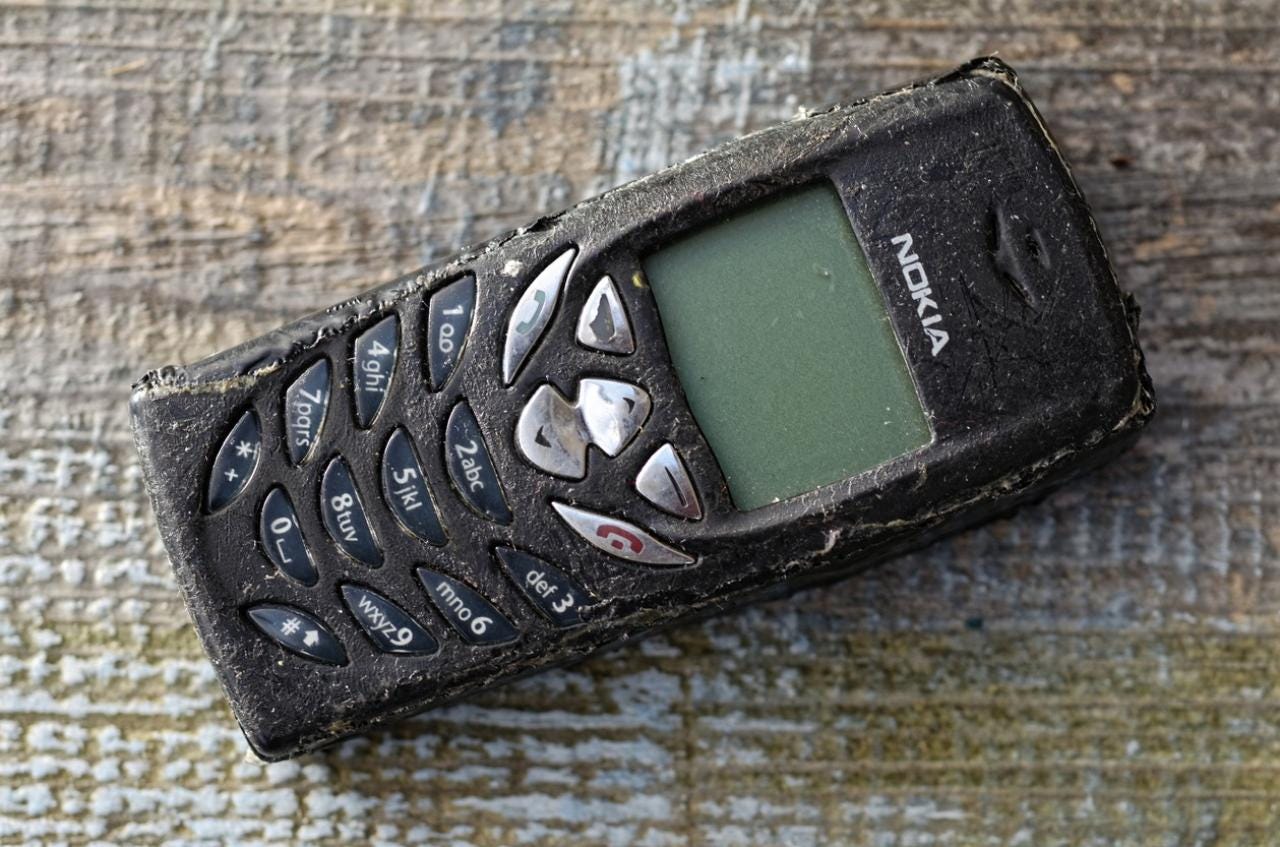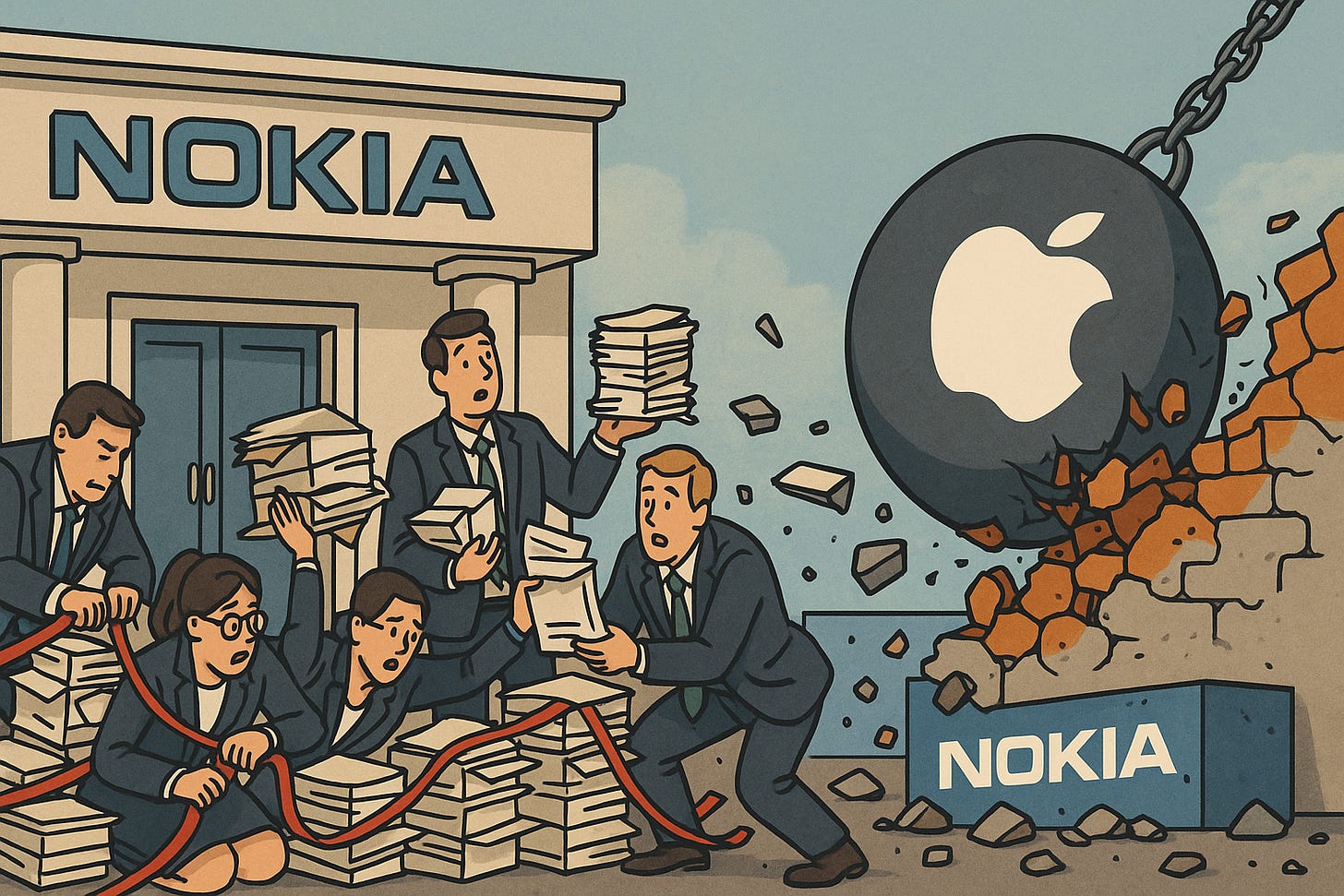Nokia’s Collapse: A Masterclass in Failed Execution
Nokia had the right strategy, but bureaucracy prevented them from achieving it
In 2007, Nokia watched Apple unveil the iPhone. And yes, Nokia recognized that the future was shifting from hardware to software and ecosystems. They bet on the right direction.
Yet just six years later, Nokia’s handset division was sold to Microsoft, and the company’s dominance collapsed. So how does a company that understands the shift still fail spectacularly?
Because execution broke. And in many ways, the execution failure was ferocious, systemic, and rooted in organizational pathology. Let’s look at the five contributing factors below.
1/ A fractured strategy: diluted bets kill focus
To pivot to software, Nokia tried everything: Symbian, MeeGo, and then Windows Phone, but never fully committed to any one of them. Each platform had its own internal champions, competing budgets, and different roadmaps.
By 2010, executives debated whether to remain loyal to Symbian (its legacy OS), accelerate MeeGo (a joint Intel initiative), or bet the house on Microsoft’s Windows Phone. That strategic indecision fragmented focus and drained resources.
2/ Decision paralysis in a fast-moving world
In the smartphone arena, where iterations occur quarterly, Nokia’s decision cycles moved glacially. Committees debated and stalled, while Apple shipped new hardware and software aggressively.
The culture had become risk-averse and closed. Leaders exerted pressure to deliver results while middle managers, fearful of losing status, avoided speaking up. Coordination froze, and crucial signals never reached the top.
3/ Culture of fear: no one wants to speak up
It wasn’t just slow decisions: it was a culture of silence. Middle managers were intimidated, discouraged from voicing bad news, or fearfully penalized if they dared to challenge leadership. This atmosphere made it almost impossible to detect pivots in time, because no one would admit or highlight vulnerability.
4/ Agile couldn’t save them
One of the greatest ironies is that Nokia actually prided itself on being an agile company long before “Agile” became a management buzzword.
The Finnish giant had reinvented itself enough times throughout its 147-year history to boast about its “Business Agility.” They even outmaneuvered rival Ericsson in the 2000s, leveraging adaptability and speed to dominate global mobile device markets. Nokia became one of the first major companies to fully adopt Agile at scale, emerging as the largest enterprise Agile implementation in the world.
But Agile alone couldn’t save them. Despite having the most crucial competitor insight, and even a product in development to respond to the iPhone, Nokia’s executional dysfunction meant they couldn’t respond in time.
5/ Siloed units: competing agendas, no alignment
Even when the strategic intent was to pivot to software, the organization didn’t act as one. Hardware, software, R&D, UI/UX, and services units each pursued semi-autonomous goals. Internal silos grew thicker.
Engineering ideas were buried under layers of bureaucracy, while departments defended their own status rather than cooperating. Contrast that with Apple: hardware, software, and services all running in one synchronized machine.
Results: how deep the fall was
The collapse was swift and brutal. In 2007, Nokia held a nearly 40% share in mobile devices. By 2011, it had dropped to ~25%. By 2013, Nokia’s market share in smartphones had cratered, and Microsoft bought the handset division. Microsoft itself later wrote off much of the value of that acquisition. The handset business failed to deliver profitability under Windows Phone.
To be fair, Nokia is still around today as a B2B telco company. However, their famous consumer brand is gone.
What you can do
Nokia didn’t fail because of strategy. It failed because it couldn’t execute the strategy it already saw.
And the irony? The world’s most “Agile” company still failed. Agile practices without strategic clarity and aligned execution don’t guarantee survival.
A few lessons if you lead a team, division, or company:
Demand one clear bet. Don’t fragment effort over 3 “maybe” platforms.
Drive fast, decisive action, even when imperfect.
Build psychological safety so people speak truth.
Break silos: unite your equivalent of hardware, product, software, and services.
Don’t confuse Agility with execution. Agile is a tool. Strategy and alignment make it work.
Have you seen this in your org? Where brilliant strategies collapsed because execution couldn’t catch up? Reply with an example. I’ll respond.
Strategy reality check
At Unblock, we’re offering a free 1:1 Strategy Reality Check. Send us your strategy deck, talk through your process of execution, and we’ll provide you with hands-on ideas, input, and templates to improve your chances of realizing your strategy successfully.
That’s it for today. I hope you enjoyed it. Simply hit ‘reply’ or comment. I read every message. Have a great day! ☀️




